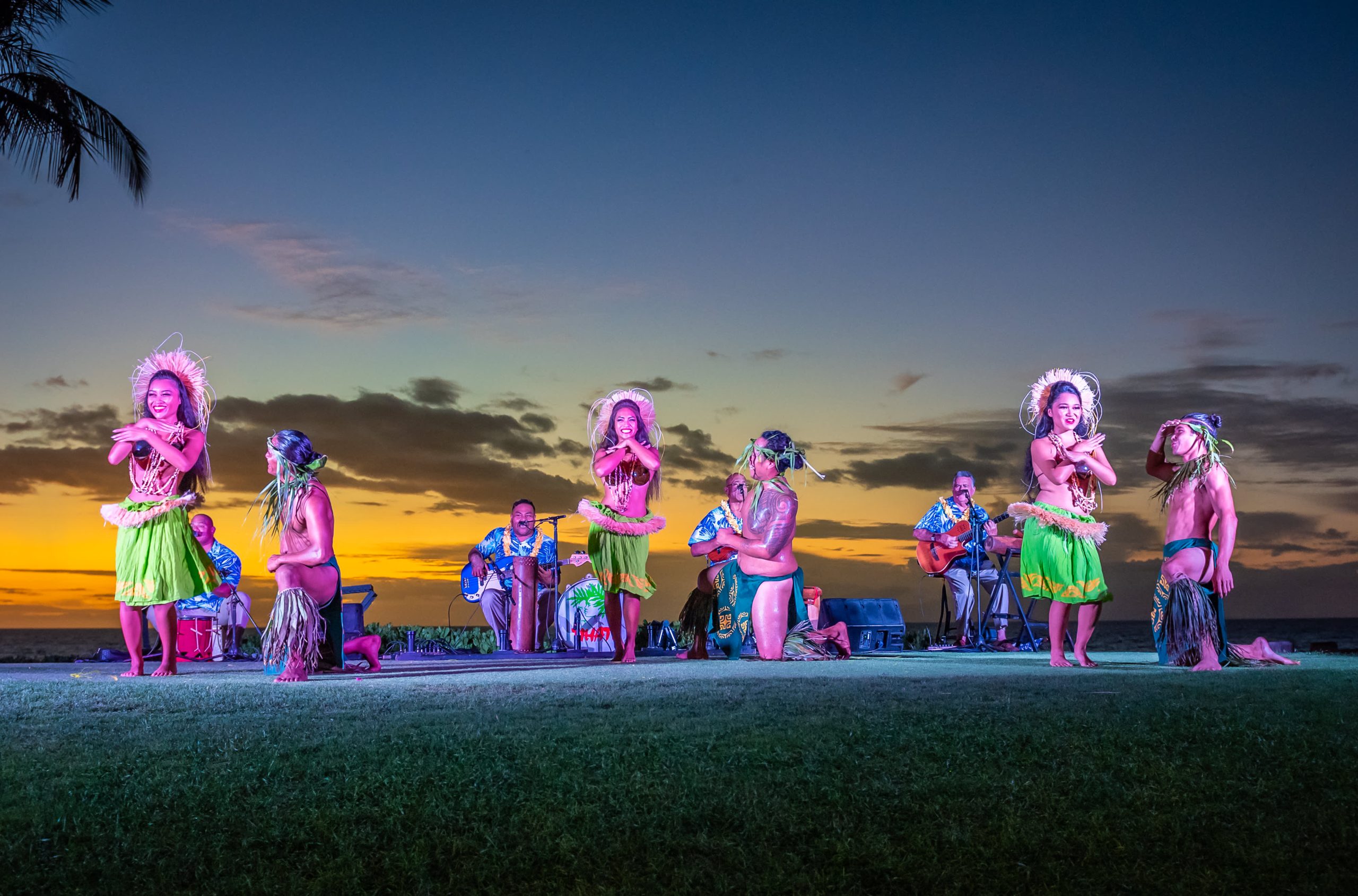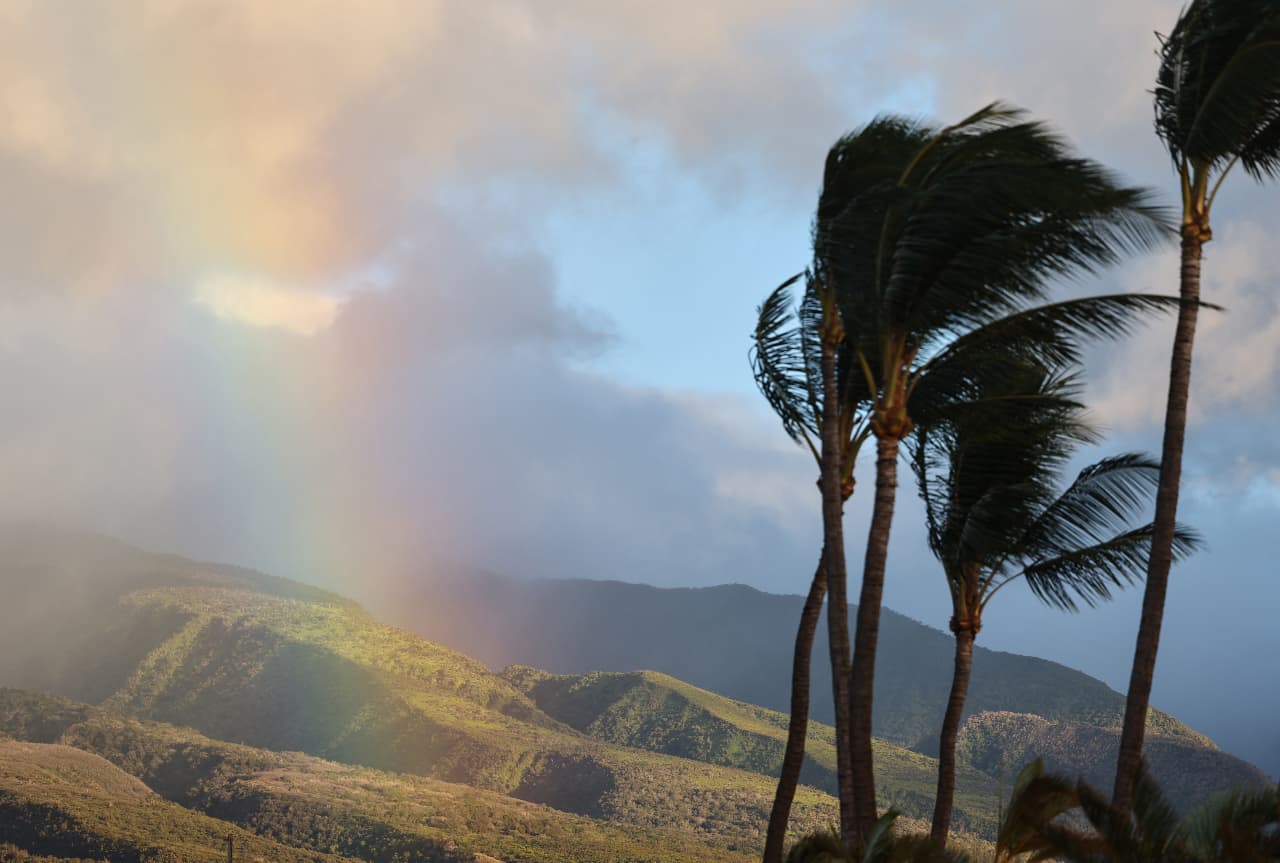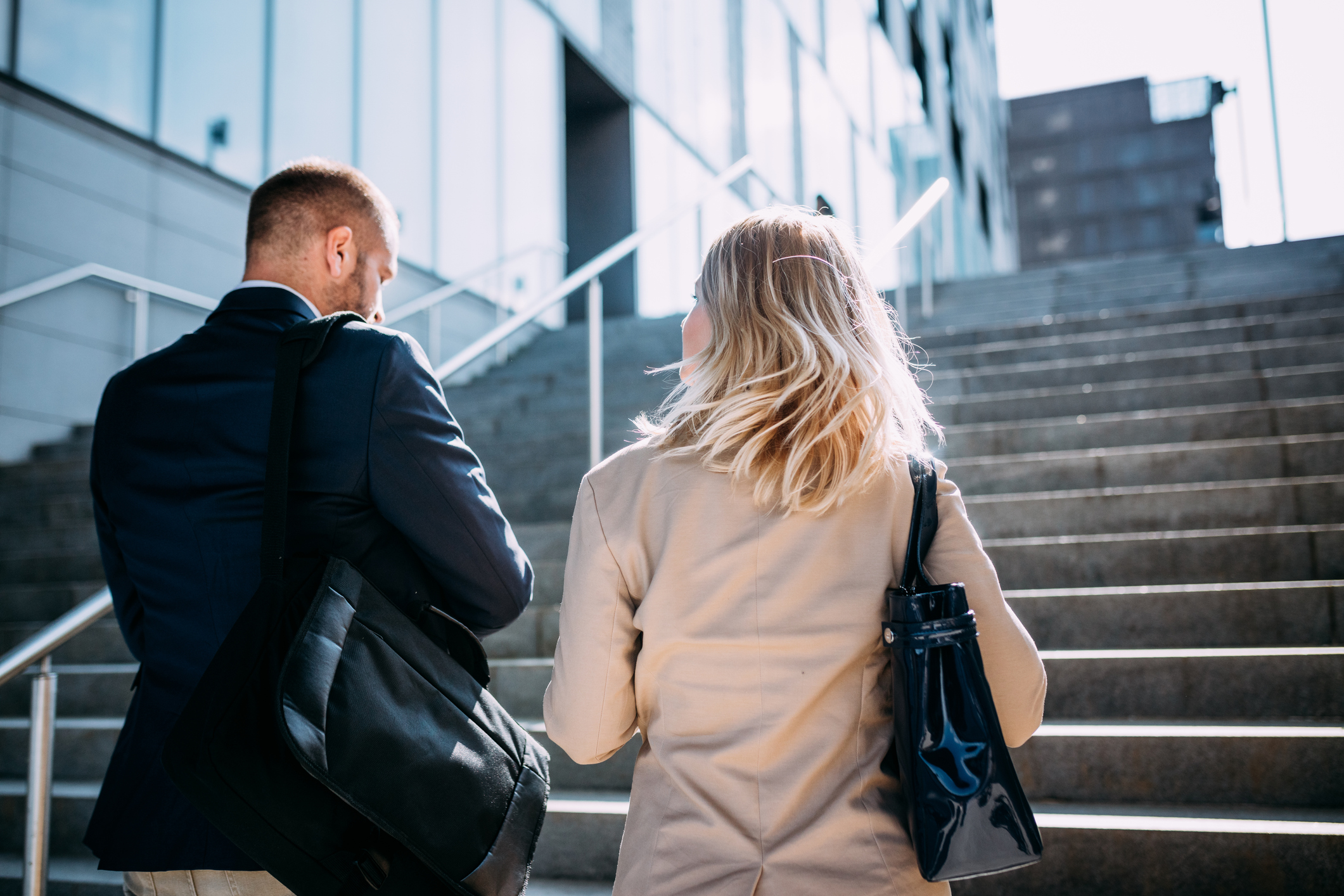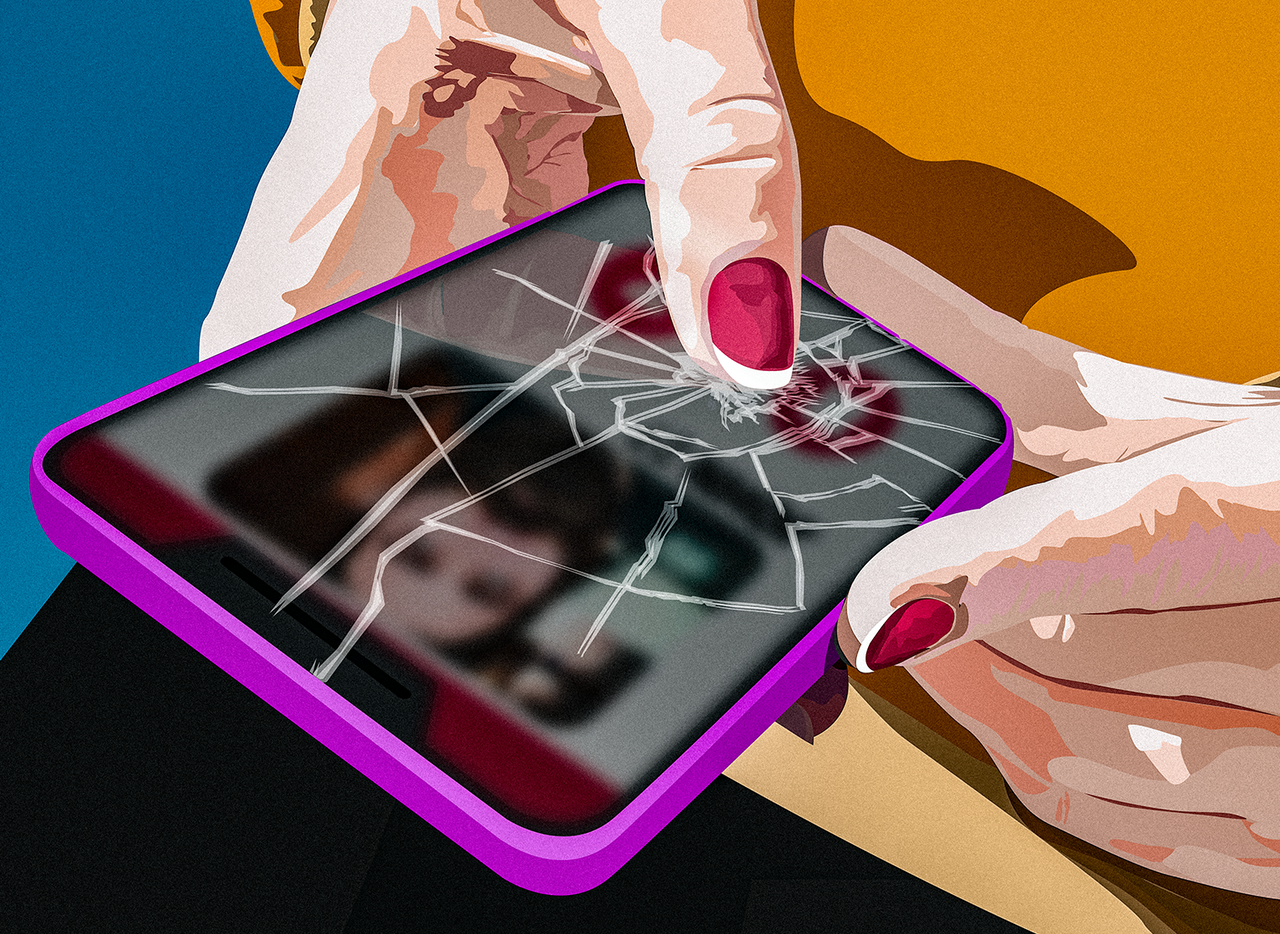‘Look Them in the Eye.’ As Maui Rebuilds, Returning Tourists Need to Be Mindful of the Trauma, Says Cultural Advisor.
There’s an opportunity for education as tourists return to Maui while it rebuilds from last summer’s devastating wildfire, says Kalikolehua Storer, a Lahaina resident and the area cultural and training advisor for Hyatt’s Maui resorts.
Designated a National Historic Landmark in 1962, the Lahaina Historic District—once a lush Hawaiian capital and retreat for Hawaiian monarchs—is beloved by residents, explored by tourists, and has a deep-rooted heritage. Storer was working on the opposite side of the island when the blaze started last August. She scrambled to connect with family and friends. And like so many others, she grappled with the utter chaos that rapidly destroyed her hometown.
Storer’s home was spared, but the fire ultimately claimed 115 lives and destroyed or damaged more than 2,300 structures, including culturally significant sites like the Na ‘Aikane o Maui Cultural and Research Center, which housed invaluable Hawaiian artefacts (books signed by kings, genealogy, maps, and more).

Courtesy of Hyatt
Historically, Lahaina thrived from mauka to makai (mountain to ocean), with waterways nourishing native ecosystems and communities. However, years of water redirection and climate-related drought set the stage for such a disaster, and according to Storer, the fire underscored the erosion of Hawaiian control over land and natural resources, spotlighting issues like land degradation, water misappropriation, and tourism’s stronghold on Maui.
Tourism makes up a substantial part of Maui’s GDP. The wildfire led to a 51.4% drop in visitor arrivals between August and October 2023 compared to 2022, triggering a sharp 87.1% rise in unemployment, according to government statistics.
The sector’s dominance highlights the need for a more balanced and sustainable model. Moreover, the fire’s impact on tourism underscores the urgency to diversify Hawaii’s economy for greater growth and resilience. Lahaina’s water management issues, such as the historical diversion for sugar cane cultivation, have drastically altered local ecosystems.
With only 23% of water allocated for public use and the majority consumed by the private sector (resorts, golf courses, and some agriculture, for instance), the ecological imbalance has had severe consequences for indigenous environments. Storer said she believes the aftermath of the fires and the strain on Maui’s tourism highlight the interconnectedness of ecological health and economic stability.
In response to the crisis, Maui Mayor Richard Bissen formed a five-member advisory team to lead the recovery efforts, with Storer as a key participant. Storer also sits at the table of Maui’s Office of Recovery Natural and Cultural Resources, which helps to shine light on issues impacting air, water, and land. Storer collaborates with partners from federal, state, and county levels, along with Lahaina’s cultural practitioners, to facilitate Lahaina’s recovery post-wildfire.
Storer shared visions of Maui’s rebuild with Penta , and the balance between tourism, ecology, and the road to sustainable solutions.
Penta: With such a huge road ahead, how are you embracing hope? And what is your ideal vision for Maui?
Kalikolehua Storer: I know that I can get caught up in the end result of what will or will not work, but in the moment, our community needs to be heard, and this is my part to lean into what they are sharing. People have envisioned Lahaina as a walking town with cultural sites, a cultural marketplace, and restoring Mokuʻula, the site of the private residence of King Kamehameha III from 1837-1845. It has since been buried under a baseball field.
We also need to diversify the economy. This is a big task, but with Hawaiian leaders in all sectors, I am confident that this can be accomplished. We have nowhere else to go but up, so all ideas are worth a conversation. My ideal Lahaina is to rebuild our historical sites, churches, and learning centres, and better care for the ocean, land, and air. To be better stewards, we need to educate and make it a priority. All of us, including visitors, need to know the importance. The issues we have about water and land need to be resolved.
Explain more about the land and water and how they are pivotal parts of recovery.
The West Maui Mountains are home to the Pu’u Kukui Watershed and Mauna Kahalawai Watershed Partnership (caretakers of the mountain area directly above the impact zone), which used to flow through waterways and land divisions ( ahupua’a ) to enrich the ecosystems. However, when the sugar cane and pineapple industry arrived, that water was diverted and went straight to those farms. The water never went back to the way it was, and because of this, the indigenous ecologies have been drained. So, water needs to be returned to streams, and a greater percentage needs to be given for public use. This is a major issue and needs to be resolved. The waterways are there, but they need to be cleaned and prepared for water to flow. That has to start upland of the watershed. Looking at an aerial map of Kauaula Valley, most of the area is dry, but along the river where the Palakiko family lives is very lush. They prepared the stream area, and it came back. However, that took years because of private-sector control.

Courtesy of Hyatt
Many people believe that tourism is the biggest problem. Is that true?
Right after the fire, many people encouraged tourists to stay away. And people listened. Our economy dropped because people stopped coming. Unemployment shot up, and the economy, as a whole, suffered. Our island is so dependent on tourism, and that is part of the problem. I believe we need to diversify the economy.
How can we educate tourists, and how can hotels be better stewards?
It truly is all about education and visitors engaging in cultural experiences and even conservancy programs, so that they have a better understanding of people and place when they visit. At Andaz and the other Hyatt hotels in Maui, I’ve developed very strong, culturally driven programs to engage our guests in authentic Hawaiian activities. Things like lei making, coconut weaving, hula lessons, celestial navigation, taro demonstrations, and Natural Cultural Resources programming with the Pu’u Kukui Watershed Preserve, Kipuka Olowalu, and the Ma Ka Hana Ka ‘Ike at Mahele Farms.
At Andaz, the lūʻau experience is called the Feast at Mōkapu and focuses on the journey of the Polynesian ancestors arriving on Maui and settling in the ahupua’a where the resort sits. We don’t hold back in that storytelling. We dive into history that isn’t normally spotlighted at luau, and the uncomfortable truth of settlers to Hawaii is really important. After the fires, this education became even more important, and I encourage tourists to participate in experiences like this.
Hotels play a huge role in this and can provide cultural sensitivity sessions for their guests.
How can tourists play a role in the rebuilding?
It’s important now more than ever for visitors to consider what happened, and that their waiter, housekeeper, bartender, front desk attendant, dive instructor, store clerk, literally everyone was somehow impacted by this. Asking people how they are doing, looking them in the eye, and caring about them can make a huge difference. Also, if you choose to visit Maui, there are ways to volunteer and donate. We’re not just looking at physically rebuilding here, we’re looking at emotional wellness, history, and so much more that is going to take years. So, I would say donating to Maui Strong and taking a few hours of vacation time to volunteer can greatly help.
Allocation of funds and policies that help to financially sustain our agencies that do the work in the watersheds, waterways, farmers, and ocean agencies. The work they do today is the key to this turnaround. I believe that visitor taxes should be allocated for our Natural and Cultural Resources effort.
How can tourists be a “good tourist” and still visit in a conscientious way?
Be kind without being maha’oi (being forward in asking) and asking so many questions. A nice, genuine smile and encouraging words in passing can uplift someone. Also, those who own vacation rentals. We need help from that sector. We need to take a look at the things that got us into this crisis to begin with. Unfortunately, we are having to work through policies written years ago, not ever thinking we would be in this situation.
This interview was edited for length and clarity.
 Copyright 2020, Dow Jones & Company, Inc. All Rights Reserved Worldwide. LEARN MORE
Copyright 2020, Dow Jones & Company, Inc. All Rights Reserved Worldwide. LEARN MORE
This stylish family home combines a classic palette and finishes with a flexible floorplan
Just 55 minutes from Sydney, make this your creative getaway located in the majestic Hawkesbury region.
As Paris makes its final preparations for the Olympic games, its residents are busy with their own—packing their suitcases, confirming their reservations, and getting out of town.
Worried about the hordes of crowds and overall chaos the Olympics could bring, Parisians are fleeing the city in droves and inundating resort cities around the country. Hotels and holiday rentals in some of France’s most popular vacation destinations—from the French Riviera in the south to the beaches of Normandy in the north—say they are expecting massive crowds this year in advance of the Olympics. The games will run from July 26-Aug. 1.
“It’s already a major holiday season for us, and beyond that, we have the Olympics,” says Stéphane Personeni, general manager of the Lily of the Valley hotel in Saint Tropez. “People began booking early this year.”
Personeni’s hotel typically has no issues filling its rooms each summer—by May of each year, the luxury hotel typically finds itself completely booked out for the months of July and August. But this year, the 53-room hotel began filling up for summer reservations in February.
“We told our regular guests that everything—hotels, apartments, villas—are going to be hard to find this summer,” Personeni says. His neighbours around Saint Tropez say they’re similarly booked up.
As of March, the online marketplace Gens de Confiance (“Trusted People”), saw a 50% increase in reservations from Parisians seeking vacation rentals outside the capital during the Olympics.
Already, August is a popular vacation time for the French. With a minimum of five weeks of vacation mandated by law, many decide to take the entire month off, renting out villas in beachside destinations for longer periods.
But beyond the typical August travel, the Olympics are having a real impact, says Bertille Marchal, a spokesperson for Gens de Confiance.
“We’ve seen nearly three times more reservations for the dates of the Olympics than the following two weeks,” Marchal says. “The increase is definitely linked to the Olympic Games.”

Getty Images
According to the site, the most sought-out vacation destinations are Morbihan and Loire-Atlantique, a seaside region in the northwest; le Var, a coastal area within the southeast of France along the Côte d’Azur; and the island of Corsica in the Mediterranean.
Meanwhile, the Olympics haven’t necessarily been a boon to foreign tourism in the country. Many tourists who might have otherwise come to France are avoiding it this year in favour of other European capitals. In Paris, demand for stays at high-end hotels has collapsed, with bookings down 50% in July compared to last year, according to UMIH Prestige, which represents hotels charging at least €800 ($865) a night for rooms.
Earlier this year, high-end restaurants and concierges said the Olympics might even be an opportunity to score a hard-get-seat at the city’s fine dining.
In the Occitanie region in southwest France, the overall number of reservations this summer hasn’t changed much from last year, says Vincent Gare, president of the regional tourism committee there.
“But looking further at the numbers, we do see an increase in the clientele coming from the Paris region,” Gare told Le Figaro, noting that the increase in reservations has fallen directly on the dates of the Olympic games.
Michel Barré, a retiree living in Paris’s Le Marais neighbourhood, is one of those opting for the beach rather than the opening ceremony. In January, he booked a stay in Normandy for two weeks.
“Even though it’s a major European capital, Paris is still a small city—it’s a massive effort to host all of these events,” Barré says. “The Olympics are going to be a mess.”
More than anything, he just wants some calm after an event-filled summer in Paris, which just before the Olympics experienced the drama of a snap election called by Macron.
“It’s been a hectic summer here,” he says.

AFP via Getty Images
Parisians—Barré included—feel that the city, by over-catering to its tourists, is driving out many residents.
Parts of the Seine—usually one of the most popular summertime hangout spots —have been closed off for weeks as the city installs bleachers and Olympics signage. In certain neighbourhoods, residents will need to scan a QR code with police to access their own apartments. And from the Olympics to Sept. 8, Paris is nearly doubling the price of transit tickets from €2.15 to €4 per ride.
The city’s clear willingness to capitalise on its tourists has motivated some residents to do the same. In March, the number of active Airbnb listings in Paris reached an all-time high as hosts rushed to list their apartments. Listings grew 40% from the same time last year, according to the company.
With their regular clients taking off, Parisian restaurants and merchants are complaining that business is down.
“Are there any Parisians left in Paris?” Alaine Fontaine, president of the restaurant industry association, told the radio station Franceinfo on Sunday. “For the last three weeks, there haven’t been any here.”
Still, for all the talk of those leaving, there are plenty who have decided to stick around.
Jay Swanson, an American expat and YouTuber, can’t imagine leaving during the Olympics—he secured his tickets to see ping pong and volleyball last year. He’s also less concerned about the crowds and road closures than others, having just put together a series of videos explaining how to navigate Paris during the games.
“It’s been 100 years since the Games came to Paris; when else will we get a chance to host the world like this?” Swanson says. “So many Parisians are leaving and tourism is down, so not only will it be quiet but the only people left will be here for a party.”
This stylish family home combines a classic palette and finishes with a flexible floorplan
Just 55 minutes from Sydney, make this your creative getaway located in the majestic Hawkesbury region.





















